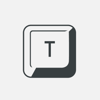Flutter has recently released the Flutter 3 for Windows, Linux, and Mac OS. The new version offers greater stability, mobile & web updates, and better performance. The new framework updates have made Flutter more compatible with Linux and Mac OS. The app developers can now use this open-source framework in multiple OS to create the app of their choice. Let us dive into the new Flutter 3 to understand what new features you can avail of in this new version.
Top new features of Flutter 3
Here are some top new features of Flutter 3, which make it one of the top frameworks available in the market for app development.
It offers cascading menus and other supports to the Mac OS system menu bar
The new feature PlatformMenuBar widget allows you to create platform rendered menu bars on the Mac OS. This widget supports the insertion of platform-only menus. It gives you control over what is displayed in the Mac OS application menu.
Complete support for the international text input in every type of desktop platforms
The Flutter 3 offers support for international text input. This feature support languages like Chinese, Japanese, and Korean that use the text input Method editor (IMEs) for all the three desktop platforms. It also supports some third-party input methods like Google Japanese input and Sogou.
Provides access to all desktop platforms
The Flutter for Mac OS, Linux, and Windows offers full support to accessibility services like inverted colors, screen readers, and accessible navigation.
It has universal binaries by default for all Mac OS
The new Flutter 3 for the Mac OS allows desktop apps to be built as universal binaries that come with native support. This is true for both the latest Apple Silicon devices as well as the existing Intel-based Macs.
Offer supports for Windows 7/8 for app development
The new Flutter 3 offers support for Windows 7, Windows 8, and Windows 8.1 for app development. However, you should know that Microsoft no longer supports these versions. The flutter 3 offer only limited testing on these versions. The change only impacts the recommended development environment on this older version of Windows.
Mobile updates
The new release of Flutter offers support to foldable mobile devices. Flutter has collaborated with Microsoft to offer new features and widgets that allow the developer to create a highly dynamic and amazing experience on foldable devices.
In this feature, the MediaQuery comprises a number of DisplayFeatures, that allows the developer to describe the states and bounds of device elements like folds, hinges, and cutouts. Furthermore, the DisplayFeatureSubScereen widget can position its child widget without touching the bounds of DisplayFeatures. It also comes integrated with the default dialogues of the framework and pop-ups. This allows Flutter to be responsive and aware of the elements out of the box.
Refresh rate support for iOS variable
The Flutter 3 offer support for variable refresh rate on iOS devices including iPhone 13 Pro and iPad Pro with ProMotion. The flutter apps on all these devices can render the refresh rates up to 120 Hz, which was earlier just 60 Hz. This higher refresh rate leads to a much smoother experience, especially while scrolling or fast animations.
Simplified iOS releases
In the new release, you get options in the flutter to build the IPA command. It will help in simplifying the release of your iOS app. When your app is ready for distribution to the App Store or TestFlight, you have to run flutter build IPA to create an Xcode archive (.xarchive file) and app bundle (.IPA file).
Once the app you have built is completed, then you can easily upload it to the App Store through the Apple Transport Mac OS app. All you can use is the command line xcrum altool. After you have uploaded it, your app would be ready for release to App Store or TestFlight. Therefore, after you have set your initial Xcode project settings, like app icon and display name, you will no longer require an open Xcode to launch your app.
Gradle version update
For any new project you create with the new flutter 3 framework, you will find that the files created now use the newest version of the Gradle and the Gradle plug-ins. However, for your legacy projects, you have to manually upgrade them to Gradle 7.4 and android Gradle plug-in 7.1.2.
Image decoding
The flutter Web can now automatically find and use the ImageDecoder API for those browsers that support it. According to the latest information, the most popular browsers like Chrome, Opera, Samsung browser, Edge, and many others have added this API.
The latest API can decode the images asynchronously from the main thread by using the built-in image codecs of the browser. This helps in accelerating image decoding by two times. Furthermore, the main thread is not blocked and removes any chances of creating junks that were earlier created by images.
Web app lifecycles
The new flutter offers the latest life-cycle API for web apps. It gives you complete flexibility to take charge of the bootstrap process of your flutter app hosting HTML page. It allows Lighthouse to check the performance of your app. It applies to various use cases that include the following requested situations:
- A loading indicator.
- A splash screen.
- And HTML interactive landing page that is displayed on the flutter app.
These are just some of the important features of the newly launched Flutter 3. These features allow the app developers to improve their productivity and have more control and flexibility over the project.
Wrapping Up
With every new release, Flutter being more and more popular among the app developers and business community because of its advanced and easy-to-use features. So, there’s no doubt why many big names have apps built with Flutter and getting great results. Hope you get every insight of the Flutter 3. Now, let’s build some amazing apps until new features get updated!






Oldest comments (0)